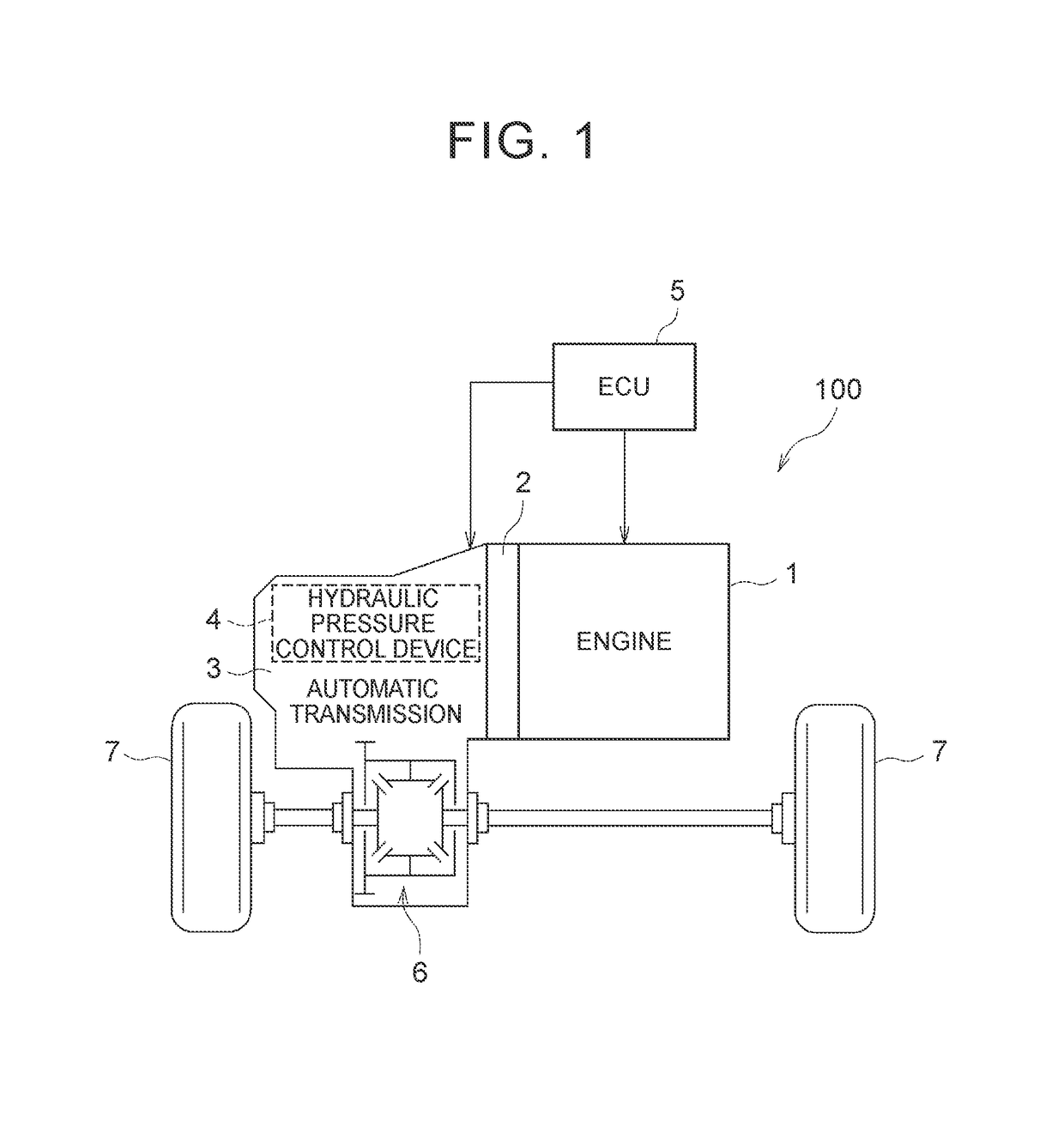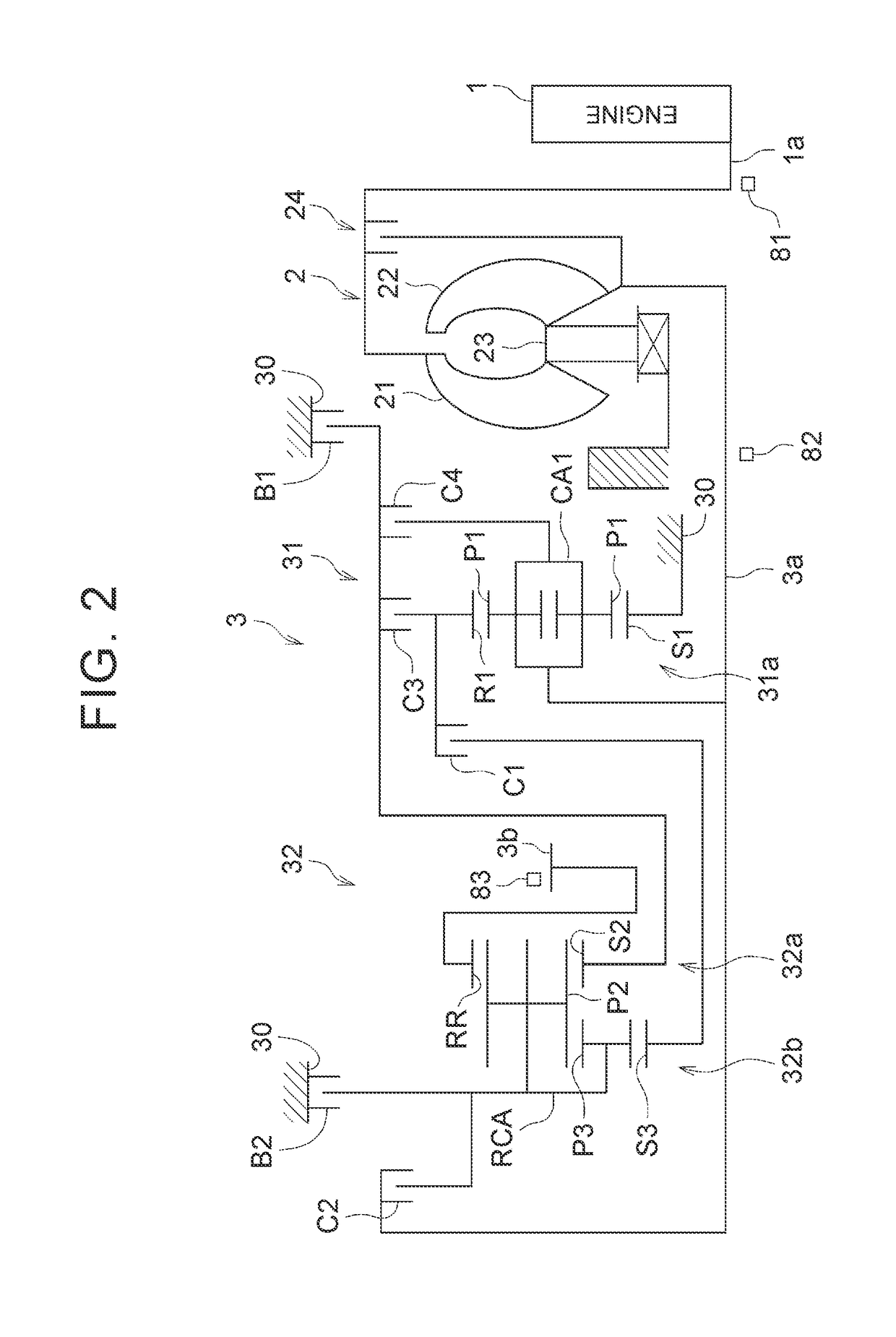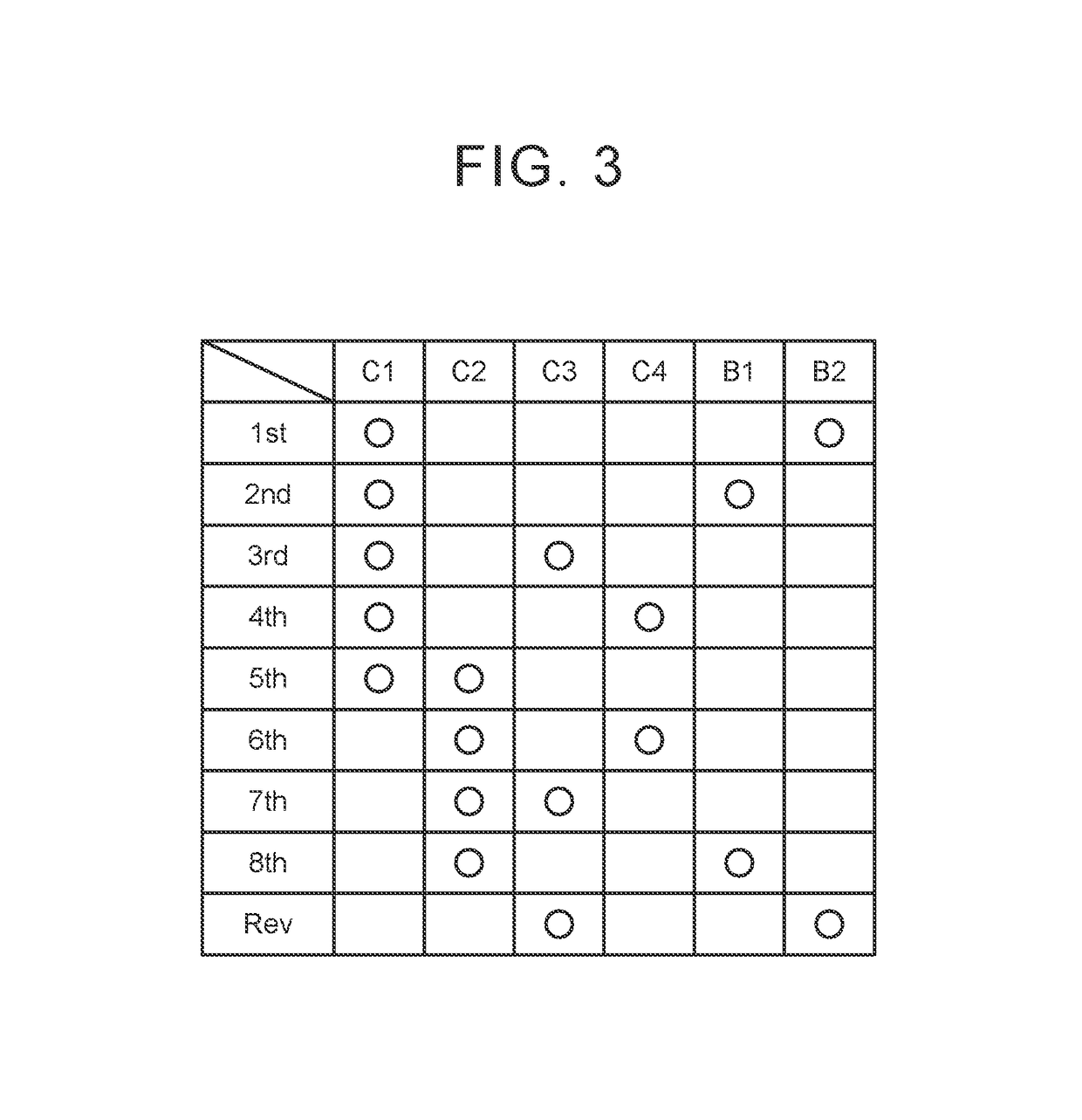Controller for automatic transmission
a technology of automatic transmission and controller, which is applied in the direction of mechanical equipment, transportation and packaging, etc., can solve the problems of prolonging the shift time, deteriorating drivability, and not being able to smoothly perform multiple shifts, so as to prevent a reduction in the rate of change in the rotation speed of the input shaft, smoothly perform multiple shifts, and prevent the effect of reducing the rate of change in the input shaft rotation speed
- Summary
- Abstract
- Description
- Claims
- Application Information
AI Technical Summary
Benefits of technology
Problems solved by technology
Method used
Image
Examples
Embodiment Construction
[0025]Hereinafter, an embodiment of the disclosure will be described with reference to the accompanying drawings.
[0026]Initially, a vehicle 100 according to the present embodiment will be described with reference to FIG. 1 to FIG. 4.
[0027]As shown in FIG. 1, the vehicle 100 includes an engine 1, a torque converter 2, an automatic transmission 3, a hydraulic pressure control device 4 and an ECU 5. The vehicle 100 is of, for example, a front-engine front-drive (FF) type. The output of the engine 1 is transmitted to a differential unit 6 via the torque converter 2 and the automatic transmission 3, and is then distributed to right and left drive wheels (front wheels) 7.
[0028]The engine (internal combustion engine) 1 is a driving force source for propelling the vehicle 100, and is, for example, a multi-cylinder gasoline engine. The engine 1 is configured such that the operation status is controllable through a throttle opening degree (intake air amount) of a throttle valve, a fuel inject...
PUM
 Login to View More
Login to View More Abstract
Description
Claims
Application Information
 Login to View More
Login to View More - R&D
- Intellectual Property
- Life Sciences
- Materials
- Tech Scout
- Unparalleled Data Quality
- Higher Quality Content
- 60% Fewer Hallucinations
Browse by: Latest US Patents, China's latest patents, Technical Efficacy Thesaurus, Application Domain, Technology Topic, Popular Technical Reports.
© 2025 PatSnap. All rights reserved.Legal|Privacy policy|Modern Slavery Act Transparency Statement|Sitemap|About US| Contact US: help@patsnap.com



